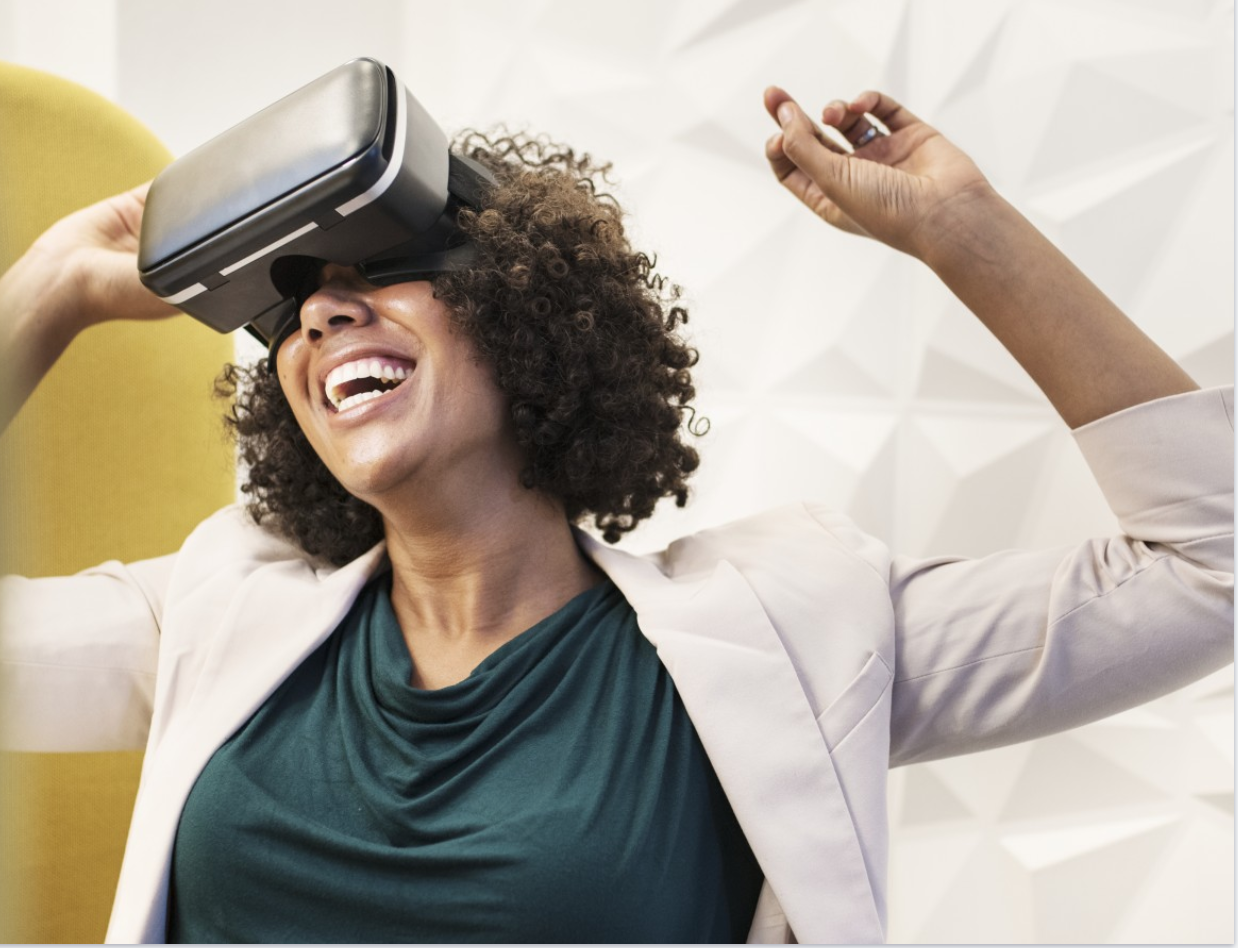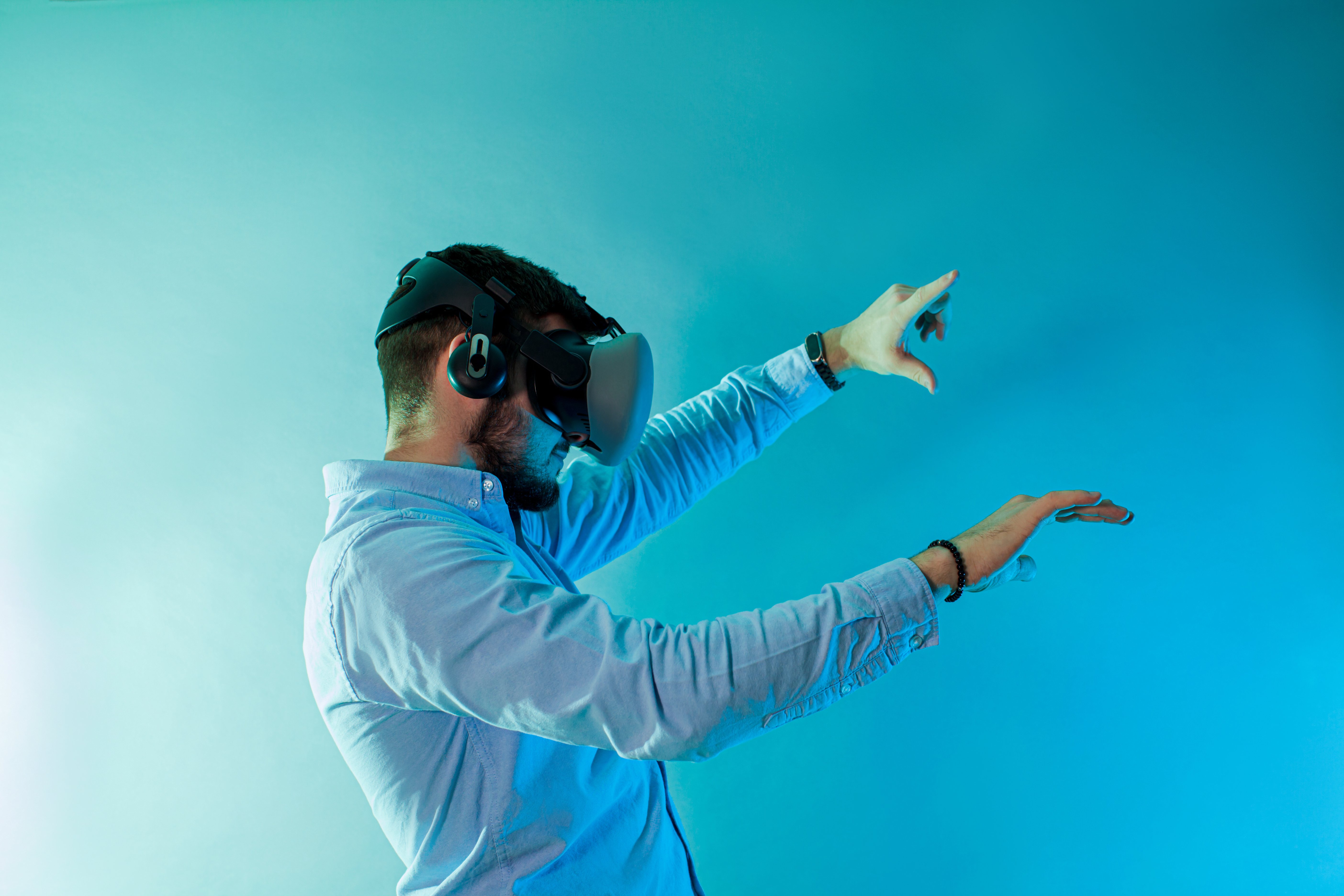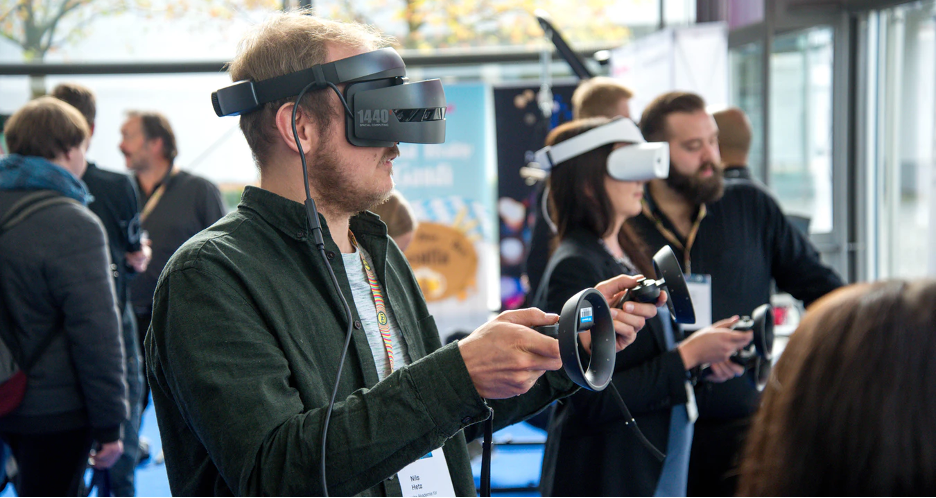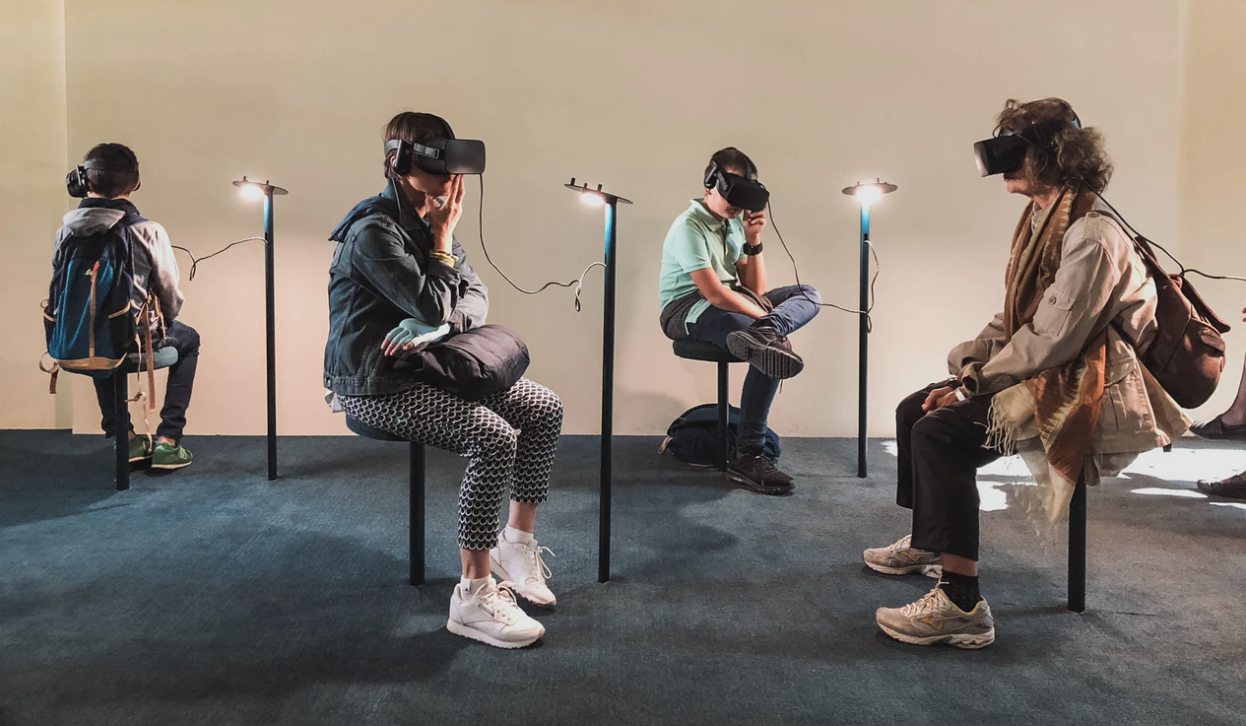
 VR requires an iterative Design – Develop – Feedback loop more than any other computational media format. The main reason for this is that every VR experience is a subjective experience and it is imperative to factor the user in the design and development process early and often. The fundamental construct that elicits responses from the user in a VR experience is the idea of Presence – “the feeling of being there in the virtual environment”.
VR requires an iterative Design – Develop – Feedback loop more than any other computational media format. The main reason for this is that every VR experience is a subjective experience and it is imperative to factor the user in the design and development process early and often. The fundamental construct that elicits responses from the user in a VR experience is the idea of Presence – “the feeling of being there in the virtual environment”.
The second major factor contributing to presence is the user. We are the sum of our experiences to-date. Each one of us have our own background and history that we bring with us and this baggage shapes the way we react to any experience. To illustrate how the user themselves can affect a sense of presence, look at the images below:

What color is the dress?
Would you be terrified to step on that glass ledge?
Does that image make you crave for dessert now?
The answers to these questions depend on who you ask these questions to as well as when, where and why. Hopefully this small exercise illustrates the need for factoring the user into the design and development process early and often. The user factor does not mean we customize the experience for each user, it means we need to understand user expectations ahead of time and build experiences that would meet these expectations.
How do we measure a concept like Presence that is purely psychological?
Presence testing is essentially a manipulation check – making sure that the user is experiencing what you want them to experience. Even though you have a usable system, you cannot expect to have an effective simulation if the user does not report experiencing what was intended for them. There might be several factors that are causing “breaks in presence” that affect the sense of presence in the virtual environment. These could range anywhere from hearing others close by talking in the real world to a high latency or low frame rate in the simulation. It is important to understand whether the user is feeling present and also what components lead to presence (or the lack of).
The primary evaluation method that is commonly employed for presence measurement is through self-report presence questionnaires. While there are several versions of the presence questionnaire used, my personal favorite is the 6-item Likert-styled Slater-Usoh- Steed Presence Questionnaire that has been commonly used for VR/VE experimental research. Ratings on this questionnaire can be compared to baseline ratings from other standard VR experiences to gather the sense of presence in the environment.
It is also important to evaluate other allied presence measurements depending on the elements that make up our virtual simulation. If our simulation involves computer-generated characters that interact with the user, then it might be necessary for the user to feel like they are not only in a virtual environment but also habiting the environment along with other people. For example, if we have a simulation for training people with public speaking that has a conference room with a crowd of computer-generated characters, then not only should the user feel like he/she is in the conference room but they also need to feel like these other characters are present in the same virtual conference room. This sense of cohabiting or copresence can be measured using the 5-item Likert-styled Bailenson Co-presence Questionnaire
In addition to the quantitative values from the questionnaires described above, there are two other ways in which presence can be measured. These metrics can be integrated in the testing process on an as-needed basis and depending on time and logistics. The advantage of these metrics is that they are indirect measurements and so harder to fake by users when compared to self-report questionnaires.
-
Behavioral measurement of presence: This is an empirical evaluation of presence. Certain moments within the environment can be designed to elicit a realistic response from the user and the experimenter can observe the user’s behavior to identify if the user responds in a realistic way at that moment. An example moment is when an object is thrown or approaches the user’s face/head. Does the user duck and try to get out of the way? If the user does evade the object, then that is a realistic response to a virtual event and can be considered evidence for the user feeling present in the virtual environment. Another example is when a user slows down his walking speed when walking over a narrow plank of wood cast over a pit in the virtual environment. This measurement is very empirical and could be used to augment results from the questionnaires.
-
Physiological measurements for presence: I have used physiological sensors like Galvanic Skin Response (GSR) and heart rate bands to measure levels of arousal during simulation use as a metric for presence. While higher arousal rates by themselves do not mean presence, we can use these numbers as additional evidence to indicate higher levels of arousal and engagement confirming a high sense of presence in the virtual environment.
So, the next time someone asks you what is the most important aspect that makes or breaks an immersive experience, remember that the user and immersion is what matters and presence is the only ticket to guarantee an impactful immersive experience.
Be sure to check out Effective VR UXR Part 2: The Four Tiers of Evaluating Immersive Experiences!
READ MORE: What's the Difference Between VR, AR and MR?, Setting Up a VR-UX Testing Lab, Strategies for Usability Testing With VR, What You Should Know About Zero-UI










Comments
Add Comment